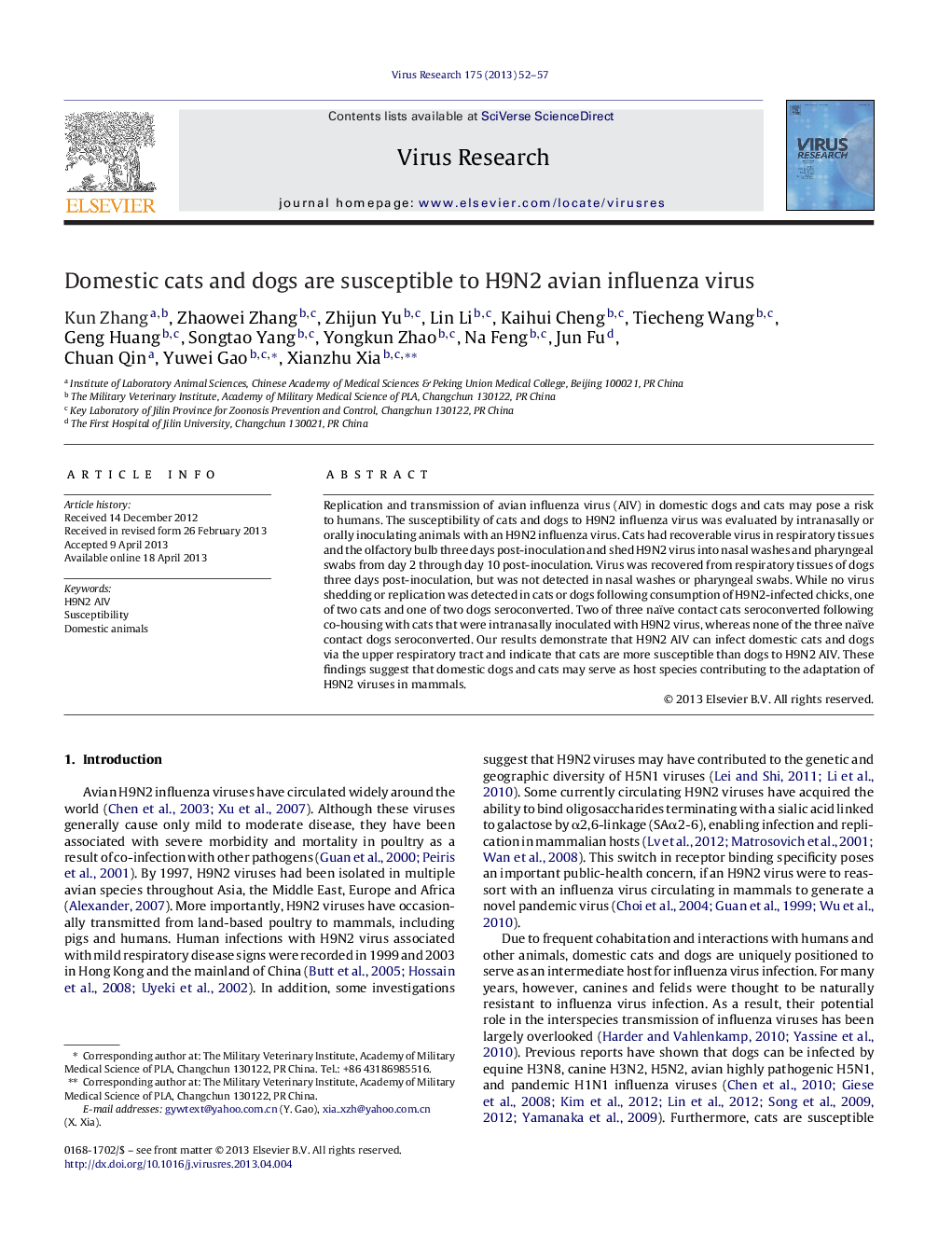| Article ID | Journal | Published Year | Pages | File Type |
|---|---|---|---|---|
| 3428620 | Virus Research | 2013 | 6 Pages |
•The susceptibility of domestic cats and dogs to H9N2 avian influenza virus was evaluated by intranasally or orally inoculating animals with an H9N2 influenza virus.•H9N2 AIV can efficiently infect cats and dogs via the upper respiratory tract.•H9N2 AIV transmission between cats and dogs is inefficient.•We suggested that the domestic dogs and cats may serve as an intermediate host in the transfer of H9N2 viruses to humans.
Replication and transmission of avian influenza virus (AIV) in domestic dogs and cats may pose a risk to humans. The susceptibility of cats and dogs to H9N2 influenza virus was evaluated by intranasally or orally inoculating animals with an H9N2 influenza virus. Cats had recoverable virus in respiratory tissues and the olfactory bulb three days post-inoculation and shed H9N2 virus into nasal washes and pharyngeal swabs from day 2 through day 10 post-inoculation. Virus was recovered from respiratory tissues of dogs three days post-inoculation, but was not detected in nasal washes or pharyngeal swabs. While no virus shedding or replication was detected in cats or dogs following consumption of H9N2-infected chicks, one of two cats and one of two dogs seroconverted. Two of three naïve contact cats seroconverted following co-housing with cats that were intranasally inoculated with H9N2 virus, whereas none of the three naïve contact dogs seroconverted. Our results demonstrate that H9N2 AIV can infect domestic cats and dogs via the upper respiratory tract and indicate that cats are more susceptible than dogs to H9N2 AIV. These findings suggest that domestic dogs and cats may serve as host species contributing to the adaptation of H9N2 viruses in mammals.
